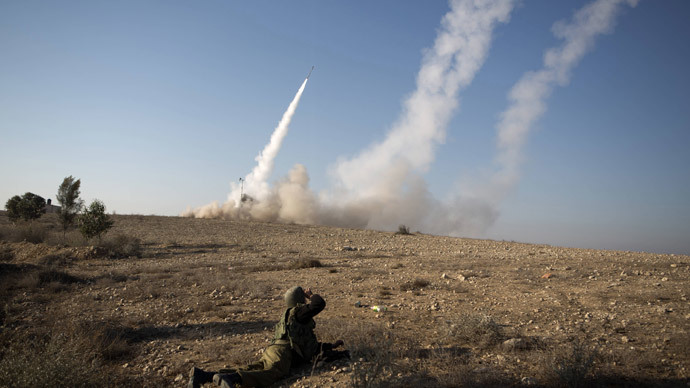Is a new Israel-Lebanon war looming while the world is busy with Ukraine?

The recent exchange of missile attacks between Israel and Lebanon is yet another indicator that the situation in the Middle East is once again approaching boiling point.
The Lebanese government wants the UN to investigate the airstrikes on Lebanese territory, allegedly by Israeli warplanes, on February 24. On Saturday, March 1, Israel announced that Hezbollah had bombarded its positions on the Golan Heights the night before, after it vowed to retaliate for earlier airstrikes Israel had carried out targeting a Hezbollah convoy carrying weapons near the Syrian border, as was reported by Israeli media.
In both cases, there was no information available regarding the number of victims or the buildings destroyed. So, what did Israel bomb in Lebanon on Monday? Did this even happen? And if so, where was it, in Lebanon or in Syria?
Actually, it wouldn’t be that difficult to go there and find out. This area, the Beqaa Valley at the foot of the mountains, is perfectly calm. Yet not a single reporter from any leading media organizations did that, and Israel hasn’t bothered to confirm its rhetoric with evidence. In 2013, Israel launched airstrikes against Lebanon three times, and each time it used the same modus operandi: top Israeli officials kept mum while newspapers claimed that Israel had destroyed Hezbollah’s deadly weapons.
On the other hand, residents of the Lebanese village of An-Nabi Chit, located near the Syrian border, saw a few Israeli planes flying low over Lebanese territory on Monday night. (Usually, they fly at an altitude of 10,000 meters.) As they approached the border, they fired their missiles. Nobody was killed or injured; nothing was destroyed.
Israeli officials refuse to comment, and Israeli media quoted unnamed sources, saying that the airstrikes targeted two trucks transferring missiles Hezbollah had received from the Syrian army to a training range, and that four Hezbollah members were killed. This is the version that most international media organizations follow. For example, the NYT not only does not question the statement that Hezbollah has some sort of a training ground where its members learn to fire rockets, the newspaper takes it for granted that Hezbollah would transport missiles from Syria, knowing that Israeli planes are watching them 24/7.

Israel claims that it knows all about Hezbollah weapons, but it cannot substantiate its claims. In 2006, it could only prove that Hezbollah has some small arms and rockets.
In the fall of 2009, Israel made a fool of itself. In order to show the world how Hezbollah was stockpiling dangerous weapons in its warehouses, they showed a video with a truck and a few people loading something into it. Hezbollah immediately published its own version of the same episode, in high resolution, where you can clearly see that those people were actually loading a garage door onto the truck.
Hezbollah, unlike Israel, is very good at providing evidence. Four years after the 2006 war, Hezbollah collected a few dozen Israeli tanks it had destroyed and turned them into an open-air museum, demolishing the myth about “invulnerable” Merkavas.
After the supposed attack on the Hezbollah base, Israel warned Lebanon that it will hold the Lebanese authorities accountable if Hezbollah retaliates. Hezbollah promised to strike back but it is highly unlikely that they would retaliate by launching a single rocket which failed to hit any targets. Still, Israel blames Hezbollah for the rocket attack near an IDF post in Mount Hermon early on Saturday morning.
Yet Israel isn’t offering any evidence, even though its entire border is bristling with a network of hundreds of tracking devices.
Lebanon, in its turn, knows that Israel withdrew its troops from the border village of Al-Gajar shortly before the alleged attack.
Mutual promises of retaliation, attacks against non-existing targets, terrorist attacks in Lebanon: all this looks very much like the escalation that preceded the 2006 war. But many things have changed since those days. Israel is losing the support it used to have, and an increasing number of people are stating publicly that this “project” will have to be terminated sooner or later. Hezbollah is stronger today, but in addition to Israel it now faces an army of partisans that has flooded into Syria.
There are other indications of pre-war tensions as well. For example, Marwan Dimashqiyyeh was found dead in his car on a highway on February 25. Rumor has it he authored an offensive song based on Hezbollah’s anthem. While the world is focused on Ukraine, the situation in the Middle East is becoming once more dangerously volatile.
The statements, views and opinions expressed in this column are solely those of the author and do not necessarily represent those of RT.
The statements, views and opinions expressed in this column are solely those of the author and do not necessarily represent those of RT.













